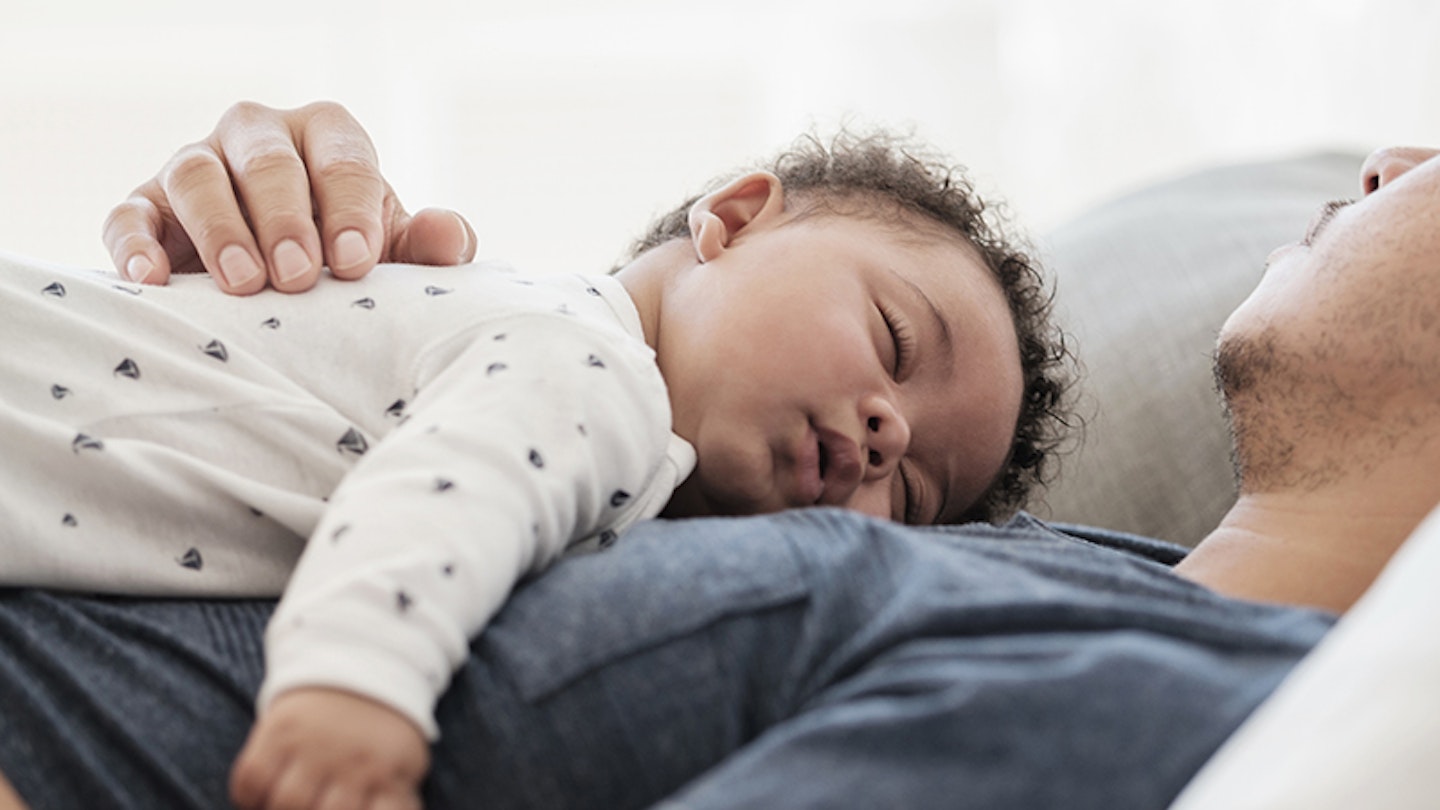Fact - little ones need naps. Until your youngster is aged somewhere between three and four years old, it’s vital to top up his night-time sleep with during-the-day snoozes.
‘Small children are so busy learning and growing that they need this extra down-time to rest and replenish,’ says baby sleep consultant Lucy Wolfe. ‘When they don’t get the daytime sleep they need, it affects their mood, their behaviour and their appetite.’ Not napping enough can also make it harder for your tot to get to sleep at night because when he gets overtired, his levels of stress hormone cortisol increase.'
Cortisol is stimulating so, however, tired your baby is, with that in his system they’ll be too alert to nod off easily. So, getting their naps right will make everything else much, much easier. And here are the secrets you need to know to help your tot into an age-appropriate sleeping pattern that will help them feel their best, no matter how old they are…
Nap chart
Check out Mother&Baby's nap chart to work out how many naps your baby should be having, plus how long to wait between them. Remember this is just a guide, all babies are different and you may find their naps vary from day to day, for example if they've had a busy day at nursery or perhaps if they are feeling unwell.
Can babies sleep too much?
When your baby’s a newborn and snoozing for up to 18 hours in every 24, it can make you worry he’s sleeping a bit too much. Even if you are secretly jealous he can drift off that easily – those were the days, eh?
But, it’s generally nothing to worry about. Some babies are just sleepier than others and in those first few months, there are times when you’ll need to wake him up, even if it’s only for a few minutes and he nods off again soon afterwards.
The main occasion you’ll need to wake your child is for a meal. ‘Never let your newborn go for more than five hours between feeds,’ says paediatric nurse and health visitorDawn Kelly. ‘If he doesn’t wake by himself, you can stir him by changing his nappy and unwrapping him so he’s a bit cooler and not so snug.’
Don’t worry about daytime naps disrupting your baby’s night as he gets older – he’ll generally sleep and wake when he needs to.
‘I wouldn’t recommend waking from day naps for children over six months unless they’re sleeping beyond 4.30pm and you’re expecting them to have a bedtime of 7pm for example,’ says Dawn. ‘Every child is different but waking a napping child could only make him cranky and overtired.’
6 expert tips for when your toddler won't nap
Lucy Wolfe is a baby sleep consultant, a mum of four and the author of The Baby Sleep Solution: The stay-and-support method to help your baby sleep through the night. Here are her tips to perfect your baby's nap routine...
baby nap tips
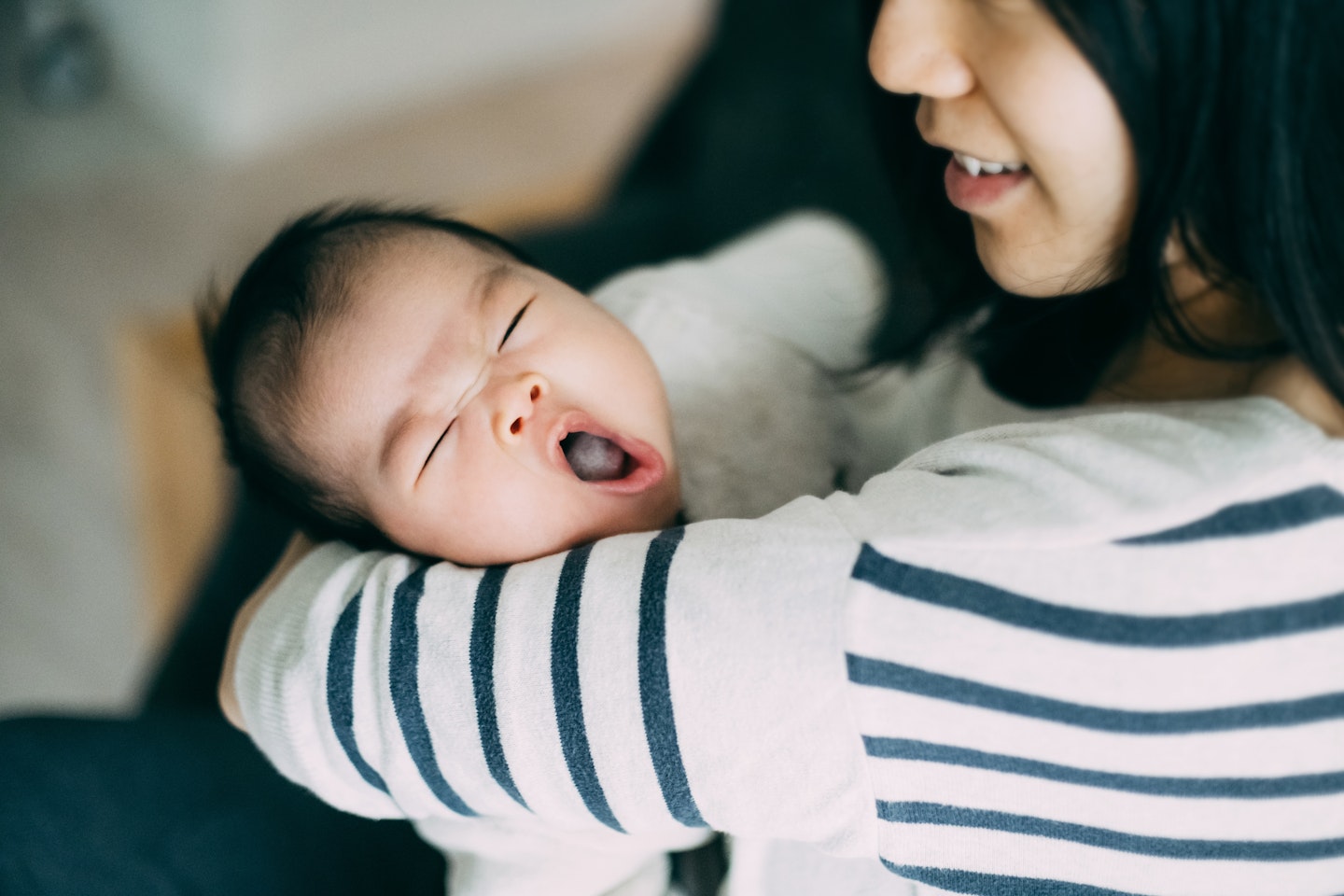 1 of 6
1 of 61) Know when to watch for pre-sleep signs
‘When it comes to naps, the clock is your best friend,’ says Lucy. The early signs that your baby is ready for a kip can be fleeting and very easy-to-miss: a momentary eye-glaze, a quick ear pull or a brief eye-run. And then, all-of-a-sudden, your baby tips from playing happily to screaming with tiredness.
The cortisol kicks in and he’s too agitated to snooze, and you haven’t even got upstairs yet! But put your tot down for his nap before he gets too tired, and he’ll settle much, much more easily. Tricky to judge? That’s where the clock come in. ‘Use it along with plus the nap chart below to see when your baby is likely to need to sleep,’ says Lucy.
Make a mental note of the time your youngster wakes up from his nap and work out when his sleep window will be for his next nap – that’s when you need to start watching for those early signs that he’s nearly ready for some more zzz’s. ‘You’ll find it particularly useful on the days when your baby tries fighting off his need to sleep, simply because it’s more exciting to stay awake!’ says Lucy.
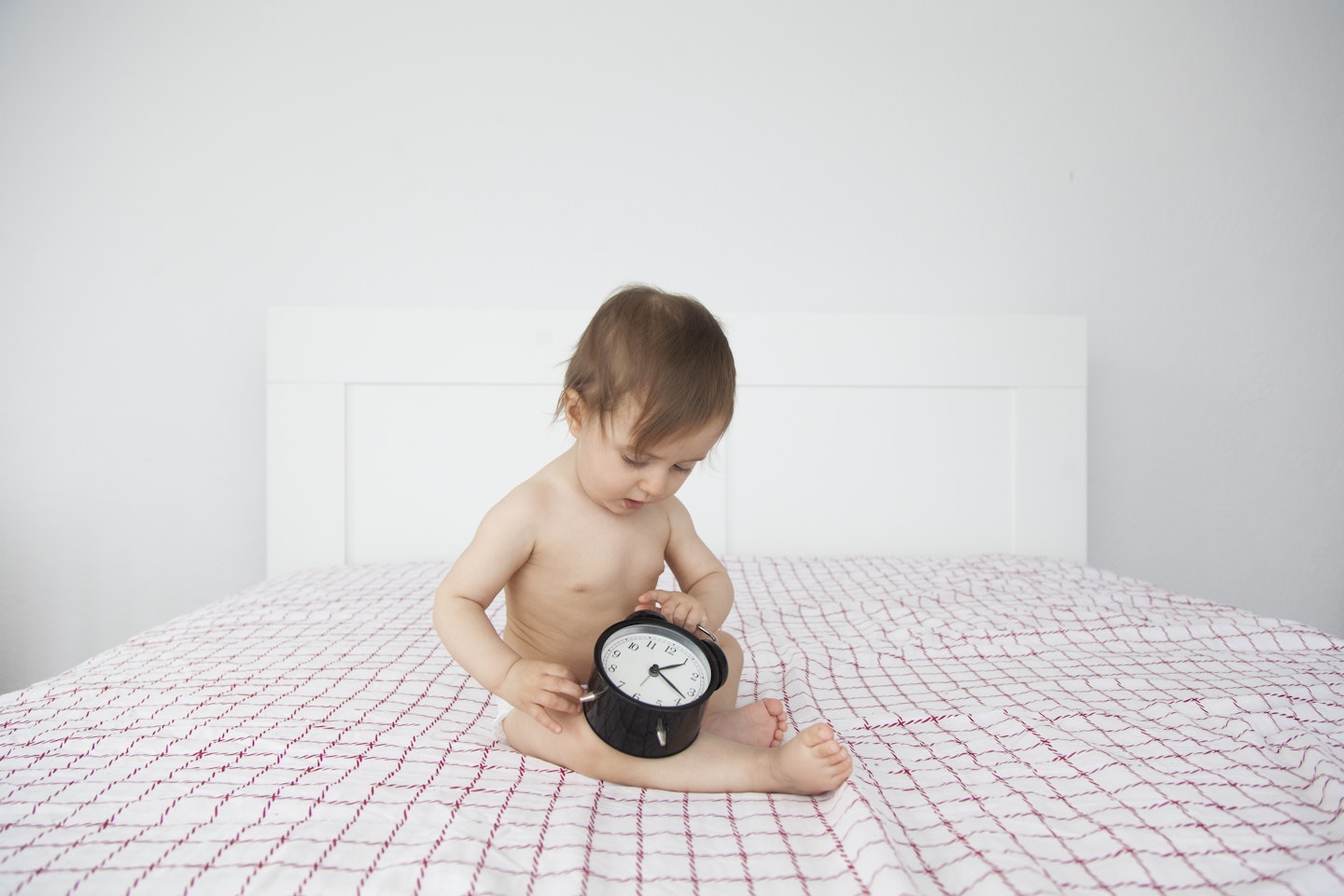 2 of 6
2 of 62) Time the first nap right
‘As your baby’s circadian rhythms kick in and he starts to learn the difference between day and night, he’ll begin sleeping for longer stretches when it’s dark,’ says Lucy. ‘And until the age of eight months, the first nap of the day is really an extension of your baby’s nighttime sleep, so I recommend getting four- to eight-month-olds down for their first nap less than two hours after they wake up.’
But once your baby is eight months plus, nudging that first nap forwards will help you build well-spaced naps through the day. ‘Wait until he’s been routinely sleeping well at night, with minimal parental input, for a good two-and-a-half weeks, before you start to work on his nap schedule,’ says Lucy. ‘But then nudge your nap timings so that his first snooze of the day doesn’t start any earlier than 9.30am. Now, that’s easy if you’ve got a youngster whose internal alarm clock wakes him at 7am, but what do you do if your eight-month-old is ready to start his day at 5am? ‘Take it really slowly,’ says Lucy. ‘Everyday, move his first nap-time later by just five minutes, until you eventually reach the time you want. The time he naps will gradually start to affect the time he wakes up in the morning, so you will create a positive cycle of later waking and later naps.’
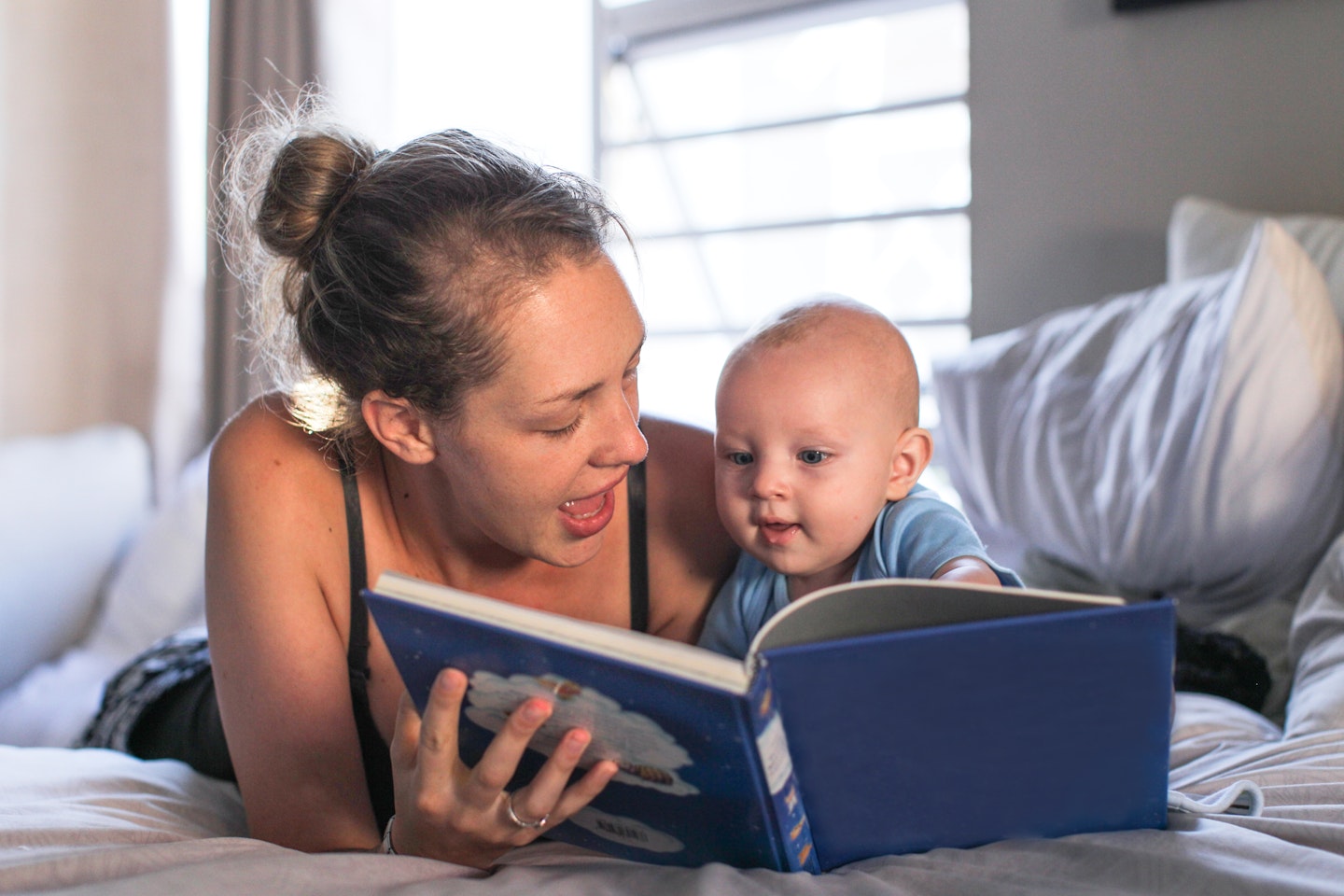 3 of 6
3 of 63) Embrace the magic of routine
It’s not easy to learn how to snooze during the day: it’s light, bright and noisy, and your baby doesn’t have the sleep hormone melatonin to help him drift off. ‘Babies start to produce melatonin at around six weeks old,’ says Lucy. ‘This builds up in his body towards the end of the day and helps prompt him to go to sleep at night. But he doesn’t have that natural snooze-cue during the day.’ And that’s why it’s important to give your baby a clear pre-nap routine so he knows it’s time to wind down ready for sleep. ‘It becomes a prompt – your baby will know that that a nappy change plus story plus cuddle and into his cot means it’s time to sleep,’ says Lucy. For maximum benefit, use a shortened version of your bedtime routine, as this will harness all the sleep associations he already has.
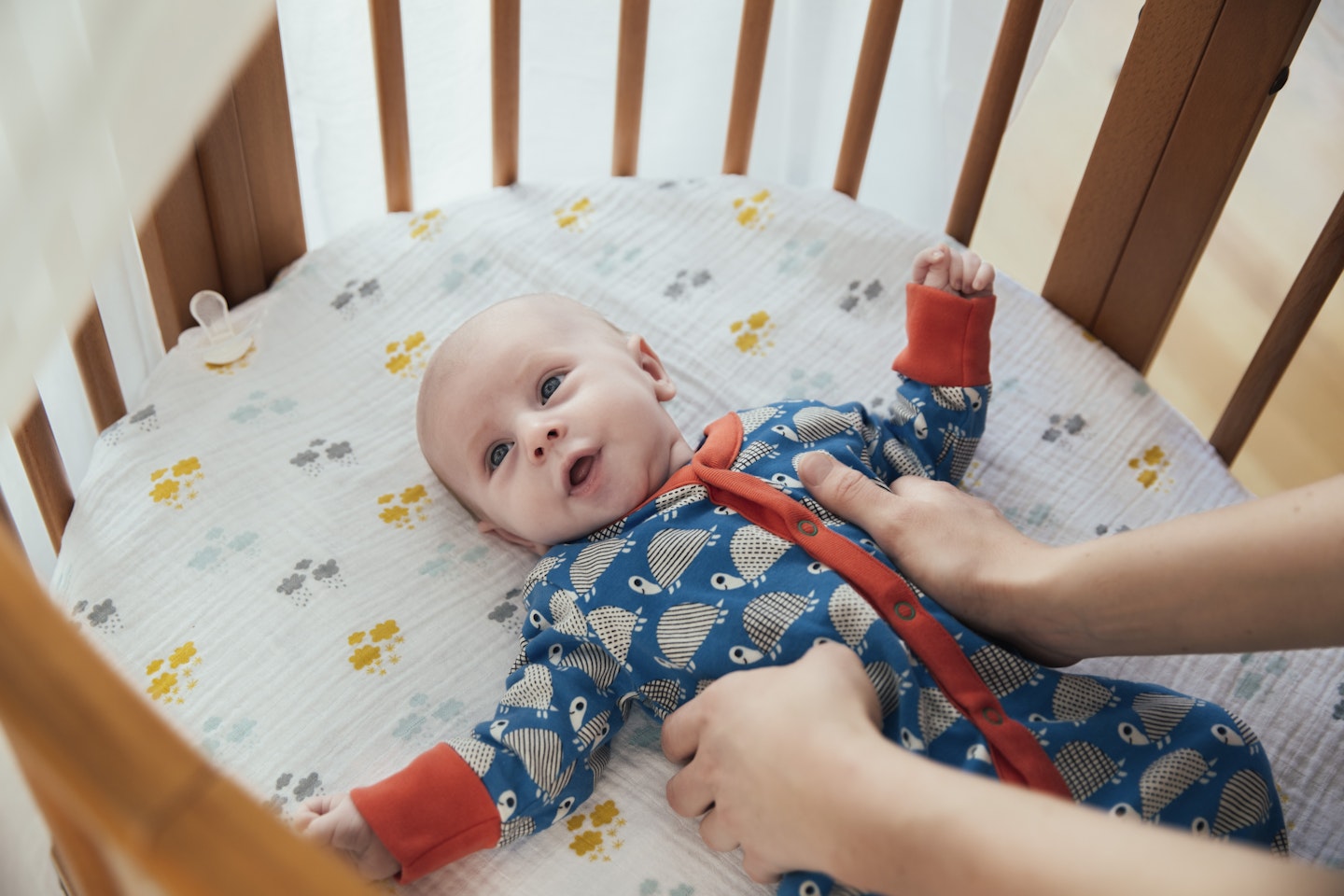 4 of 6
4 of 64) Make his first nap in his cot
‘The best environment for your baby to nap is his cot,’ says Lucy. ‘It’s familiar, it smells comforting, and you can easily adjust temperature and the light levels, all of which means he’ll have a better-quality sleep than if were napping in his buggy, a sling or the car.’ So, whenever you can, it’s worth giving your tot his first nap of the day in his cot.
If your youngster has been used to having this first nap on the go, it can take him a while to get used to the change. But it’s worth persevering – two weeks of effort now will bring your baby better sleep for years to come.
 5 of 6
5 of 65) Have an early lunch
‘Once your baby is six months old, he’ll nap more comfortably if he’s had a 45-minute window between lunch and his nap,’ says Lucy. ‘He’ll still feel full – so he won’t wake up because he’s hungry – but he’ll have done his heavy-duty digesting and his digestive tract will be relaxed, which will help him to settle and sleep.’ You may need to bring lunch forwards to manage this at points, but it’s well worth it.
 6 of 6
6 of 66) Know a nap strike when you see one
Just like the jaune gilets, babies sometimes go on strike. Their beef isn’t about pay and conditions, it’s about napping. You want them to snooze. They want to stay awake and work on their skill set. ‘Nap strikes usually happens when your baby is 12 months old and again when he is two years old,’ says Lucy. ‘At 12 months old, he’s hard at work on his motor skills and he wants to be up and about using his muscles.
At 24 months old he has another developmental leap and his language skills blossom, so he wants to be up and chatting. And it’s common for youngsters to go on a two-week nap strike and resolutely refuse to go to sleep.’ Parents often think that their babies no longer need naps, so they stop the daytime sleep altogether. ‘But what you need to do is just keep on offering your baby his normal naps,’ says Lucy. ‘The nap strike is temporary and, after about two weeks, you’ll find that his snoozing just locks back into place.’
When do babies drop to one nap?
The average age for the transition to one nap is 15-18-months. Usually your toddler will shift to one lunchtime nap starting between 12:00-1:00pm, in sync with internal biological rhythms, or his internal sleep clock.
When do babies stop napping?
Every toddler is different, but you might find that your toddler cuts down the amount of time they nap for between one and two years old. Your toddler has a lot more energy to burn, so that midday nap is often the extra push they need to make it to bedroom with fewer tantrums, but sadly, by the age of four, your toddler will have probably stopped nap time altogether.
Read more popular articles
An age by age guide to understanding your baby's sleep cycle
